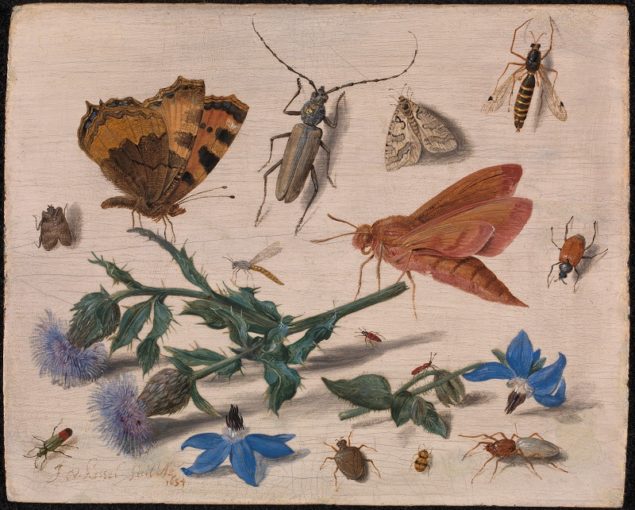The National Gallery in London acquired four Dutch and Flemish paintings through the bequest of Willem Baron van Dedem. As of today, the paintings by Adriaen Coorte, Jan van Kessel the Elder, and David Teniers the Younger are on display in room 26.
CODART member Bart Cornelis, Curator of Dutch and Flemish Paintings, says in a press release:“It is through the tremendous generosity of Willem van Dedem that the Gallery can now show works by Adriaen Coorte and Jan van Kessel, neither of whom were represented at Trafalgar Square, while an impressive work by Teniers will allow visitors to see how a scene from the Passion of Christ was interpreted as a contemporary event in 17th-century Flanders.”
Information from the museum, 12 December 2017
The renowned Dutch-born collector, who was based in London, died in November 2015 at the age of 86. For many years he had promised to give the National Gallery four paintings upon his death, and particularly desired that the works selected from his collection address gaps in the Gallery’s holdings and be on display to the public.

Adriaen Coorte (1665-1717), Still Life with a Bowl of Strawberries, a Spray of Gooseberries, Asparagus and a Plum 1703
Gift from the collection of Willem Baron van Dedem, 2017
© The National Gallery, London
‘Still Life with a Bowl of Strawberries, a Spray of Gooseberries, Asparagus and a Plum’ is one of Coorte’s most ambitious compositions. Coorte’s work is not represented in the National Gallery Collection, and there are only four other works by him in UK public collections, so this small but powerful painting is an important addition to the Gallery’s holdings of still lifes painted in the latter part of the 17th century. It also offers visitors an intriguing alternative to the lavish abundance of works by Willem Kalf or Jan van Huysum.

Jan van Kessel the Elder (1626-1679), Butterflies, Moths and Insects with Sprays of Creeping Thistle and Borage, 1654
Gift from the collection of Willem Baron van Dedem, 2017
© The National Gallery, London
Jan van Kessel the Elder is another artist who until now was not represented in the National Gallery Collection. He belonged to one of the most famous artistic ‘dynasties’ in European painting: Jan Brueghel the Elder was his grandfather, and Jan Brueghel the Younger and David Teniers the Younger were uncles.

Jan van Kessel the Elder (1626-1679), Butterflies, Moths and Insects with Sprays of Common Hawthorn and Forget-Me-Not, 1654
Gift from the collection of Willem Baron van Dedem, 2017
© The National Gallery, London
Van Kessel continued the family tradition of painting small-scale, brightly coloured and minutely detailed paintings on panel or copper, which were avidly sought after by collectors throughout Europe. He is best known for his depictions of flowers, insects and animals, both living and dead, as seen in his ‘Butterflies, Moths and Insects with Sprays of Common Hawthorn and Forget-Me-Not’ and ‘Butterflies and Moths and Insects with Sprays of Creeping Thistle and Borage’. Few works represent so well the 17th-century fascination with the natural world.

David Teniers the Younger (1610-1690), Christ Crowned with Thorns, 1641
Gift from the collection of Willem Baron van Dedem, 2017
© The National Gallery, London
David Teniers the Younger specialised in everyday scenes and made only a handful of religious works throughout his long career. Until today, the National Gallery did not have a prime example of one of his religious paintings. By using familiar figures clad in contemporary dress, and by situating the action in what could be a local garrison, Teniers heightens the immediacy and pathos of the scene.
‘Christ crowned with Thorns’ (above) is painted on an exceptionally large copper plate, and is beautifully preserved, allowing us to appreciate the artist’s colourful palette and his detailed and assured technique. While the Gallery has several large-scale history paintings by Rubens and van Dyck, until the acquisition of this work it has not been able to represent the sort of intimate and finely painted representations of historical themes that formed an integral part of sophisticated collectors’ cabinets in the 17th century.
